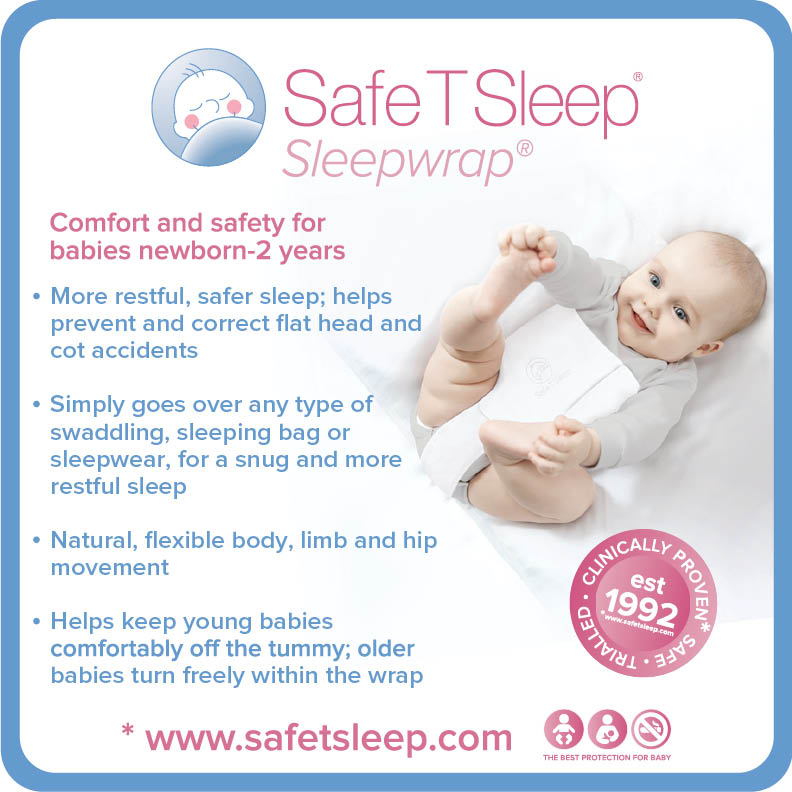Volume 18 Number 2
Editorial
Carolyn Briggs
For referencing Briggs C. Editorial. Australian Journal of Child and Family Health Nursing 2021; 18(2):2
DOI https://doi.org/10.33235/ajcfhn.18.2.2
‘Talking points’ for parental questions about COVID‑19 and young children
With the COVID‑19 disease present and well established in Australia, parents will have particular questions and concerns about keeping their children safe and preventing infection. The effects of the disease on children are topics of ongoing research and, although much is now known, there are aspects of the effect of COVID‑19 on infants and young children which are yet to be fully investigated (WHO 2021).
Health authorities within the Australian government have responded with public health education to the adult population aimed at controlling the spread of the disease. However, most of the public health messages have limited information about the effects of COVID‑19 on infants and young children.
Child and family health nurses are frontline in the community and therefore can expect to receive questions from parents who use their services seeking health information about preventing infection and recognising signs and symptoms of the disease in their young children. The purpose of this editorial is to briefly review the published literature on the transmission, clinical presentation and risk to infants and young children in order to provide ‘talking points’ for parental questions.
Transmission of the disease
Most paediatric cases occur within family clusters. Children are usually infected by adults living in the household and, once a family member tests positive for COVID‑19, they have a high likelihood of developing the disease (Bhuiyan et al. 2021). The risk of infection, however, appears to be influenced by age, as the higher risk is to other adults living in the household. Studies have suggested younger children living in the same household have a lower rate of infection, but they are still vulnerable (Siebach et al. 2021).
Children can carry and transmit the disease, but there is limited evidence of secondary infection from children to others (Bhuiyan et al. 2021). For children attending preschool, it is more likely that the children are infected by a symptomatic or pre-symptomatic adult (Siebach et al. 2021). For school aged children, the WHO (2021) review indicates there is a low level of transmission to and from children.
Although studies have indicated that children have a lower rate of transmission, the WHO report (2021) acknowledges that the relationship between age and susceptibility to infection requires further investigation, particularly the factors influencing the susceptibility of children to new variants.
Clinical presentation
Younger children, school children and adolescents usually have fewer and milder symptoms than adults and are less likely than adults to experience severe COVID‑19 (WHO 2021).
Children commonly present with fever, cough and nasal congestion. Less commonly, they may present with diarrhoea, nausea or vomiting and fatigue (de Souza et al 2020). Younger children may experience fever and runny nose, while older children are likely to complain of vomiting, abdominal pain, headache and a sore throat (Siebach et al. 2021). The symptoms may be very mild and easily go unrecognised, which highlights the need for parents to be vigilant and to respond to the likelihood of infection in their child.
Whilst some children are asymptomatic, the WHO (2021) reports that this is unusual, and the majority of infected children present with symptoms. Nevertheless, there have been reports of children whose infection was only identified from radiological abnormalities (de Souza et al 2020).
Prognosis
Only a small proportion of children become severely or critically ill. The majority of children with COVID‑19 recover well and do not experience the severity of disease seen in adults. Indeed, the prognosis seems to be very good (de Souza et al 2020). A later systematic review conducted by Bhuiyan et al. in 2021 indicates that, in children aged less than 5 years, more than 90% experience a mild to moderate disease. There is limited evidence on the effect of COVID‑19 on infants, but the available evidence suggests that neonates mostly present with mild disease (WHO 2021).
The lower infection rate for children is thought to be due to differences in their response to the virus. Corona virus is a respiratory disease in which the virus infects the alveoli in the lungs, triggering an overactive response in the immune system in adults, termed the cytokine ‘storm’, causing severe inflammation (Hu et al. 2021). The exaggerated immunopathic response results in damage to lung tissue and may lead to severe pneumonia and respiratory failure. Thus, severe lung injury in patients with COVID‑19 is considered as the result of both direct viral infection and immune overactivation. Children have an immature immune system compared to adults, and it is hypothesised that their differing immune response is due to this immaturity. It is thought the immune system in children is not primed to overreact, as it is in adults, and thus they overcome the virus more effectively, but this hypothesis is still under investigation (WHO 2021).
Risk of more severe disease
Although the progress of the disease is usually mild in young children, there are reported incidences of severe and critical disease when compared to older children. Nevertheless, the mortality rate in children is much lower than adults (Green et al. 2021a). The WHO calculated the incidence from 30 December 2019 to 13 September 2021 and reported that children under 5 years of age represented 1.8% of global cases and 0.1% of global deaths (WHO 2021). The incidence in older children and younger adolescents (5–14 years) is higher – 6.3% of global cases and 0.1% of global deaths. This compares to the incidence for older adolescents and young adults (15–24 years) of 14.5% of global cases and 0.4% of global deaths.
Children and adolescents can experience prolonged clinical symptoms, known as ‘long COVID’, but there are limited studies on the frequency and characteristics of this condition and further investigation is required (WHO 2021). A hyperinflammatory syndrome, called paediatric inflammatory multisystem syndrome, has been linked to COVID and can complicate recovery. The effects of new variants of COVID‑19 are unknown at this time and are also under investigation.
Pregnancy and neonatal period
Pregnant woman can be reassured that there is no evidence that COVID‑19 is transferred to the foetus during pregnancy (Bhuiyan et al. 2021). Pregnant women infected with COVID‑19 are not known to have more adverse outcomes compared to non‑pregnant women. There is, however, a higher rate of premature births in pregnant women who test positive for COVID‑19, but this is thought to be related to maternal pregnancy complications (Green et al. 2021a).
Neonates and infants have tested positive to COVID‑19 but at this time there is little evidence of vertical transmission from mother to child. Where the mother is known to be positive for COVID‑19 it is recommended that the neonate is thoroughly investigated for COVID‑19 (Green et al. 2021b).
As breastmilk is of such importance to the health and wellbeing of the infant, the WHO (2020) recommends that mothers with suspected or confirmed COVID‑19 should be encouraged to initiate and continue to breastfeed. Particles of COVID‑19 have been found in the breastmilk of infected mothers; nevertheless, the benefits of breastfeeding substantially outweigh the potential risks for transmission.
Face masks and young children
The wearing of masks by children under 2 years is not recommended because of strangulation and suffocation risks (Raising Children Network n.d.). Parents should be aware that infants and very young children may find the faces of masked carers worrying and react negatively to masking. In particular, the developing relationship between the infant and parent relies on the exchange of facial cues and expressions and masking interferes with this social exchange. When infants are unable to see the face of their carer, they may become anxious and unsure of their environment (Walker et al. 2021).
Maternal vaccination
Infants are particularly at risk during the first few months as their immune system is underdeveloped and they are unable to be vaccinated. Maternal immunisation has been suggested as a method to protect the infant as it is a proven strategy in providing protection to the neonate against other infectious diseases (Bhuiyan et al. 2021). Maternal immunisation during pregnancy not only protects the mother but it also protects the foetus and newborn through transplacental transfer of maternal antibody (Bhuiyan et al. 2021).
Australian Government health guidelines recommend vaccination against COVID‑19 for all pregnant women (Department of Health n.d.). Pregnant women are considered a priority group and vaccination can be offered at any stage of pregnancy. Pfizer and Moderna are the preferred vaccines for women who are pregnant, breastfeeding or planning to become pregnant.
Author(s)
Carolyn Briggs
Editor
References
Bhuiyan MU, Stiboy E, Hassan Z, Chan M, Islam S, Haider N, Jaffe A & Homaira N 2021, ‘Epidemiology of COVID‑19 infection in young children under 5 years: a systematic review and meta-analysis’, Vaccine, vol. 39, no. 4, pp. 667–677. doi:10.1016/j.vaccine.2020.11.078
Department of Health n.d., ‘COVID‑19 vaccination decision guide for women who are pregnant, breastfeeding or planning pregnancy’, Australian Government, viewed 4 December 2021, https://www.health.gov.au/sites/default/files/documents/2021/10/covid‑19-vaccination-shared-decision-making-guide-for-women-who-are-pregnant-breastfeeding-or-planning-pregnancy-
de Souza TH, Nadal JA, Nogueira RJN, Pereira RM & Brandão MB 2021, ‘Clinical manifestations of children with COVID‑19: a systematic review’, Paediatric Pulmonology, vol. 55, no. 8, pp. 1892–1899. doi:10.1002/ppul.24885
Green J, Petty J, Staff L, Bromley P, Orr F, Brown N, Smart L, Walker K & Jones L 2021a, ‘Developing nursing knowledge on COVID‑19 in children and adolescents: an integrative review’, Pediatric Nursing, vol. 47, no. 4, pp. 163–174.
Green J, Jones L, Petty J, Bromley P, Fowler C & Walke, K 2021b ‘Part 2: COVID‑19 and knowledge for midwifery practice – impact and care of the baby’, British Journal of Midwifery, vol. 29, no. 5, pp. 286–293. doi:10.12968/bjom.2021.29.5.286
Hu B, Huang S & Yin L. 2021 ‘The cytokine storm and COVID‑19’, Journal of Medical Virology, vol. 93, pp. 250–256. doi:10.1002/jmv.26232
Raising Children Network n.d., ‘Face masks and COVID‑19: supporting children 0–12 years’, viewed 1 December 2021, https://raisingchildren.net.au/guides/coronavirus-covid‑19-guide/face-masks-coronavirus-children
Siebach MK, Piedimonte G & Ley SH 2021 ‘COVID‑19 in childhood: transmission, clinical presentation, complications and risk factors’, Pediatric Pulmonology, vol. 56, pp.. 1342–1356. doi:10.1002/ppul.25344.
Walker K, Green J, Petty J, Whiting L, Staff L, Bromley P, Fowler K & Jones L 2021 ‘Breastfeeding in the context of the COVID‑19 pandemic: a discussion paper’, Journal of Neonatal Nursing, August 4, doi:10.1016/j.jnn.2021.08.003
World Health Organization (WHO) 2020, ‘Breastfeeding and COVID’, Scientific brief, 23 June 2020, viewed 29 November 2021, https://www.who.int/news-room/commentaries/detail/breastfeeding-and-covid‑19
World Health Organization (WHO) 2021, ‘COVID‑19 disease in children and adolescents’, Scientific brief, 29 September 2021, viewed 29 November 2021, https://www.who.int/publications/i/item/WHO-2019-nCoV-Sci_Brief-Children_and_adolescents-2021.1



